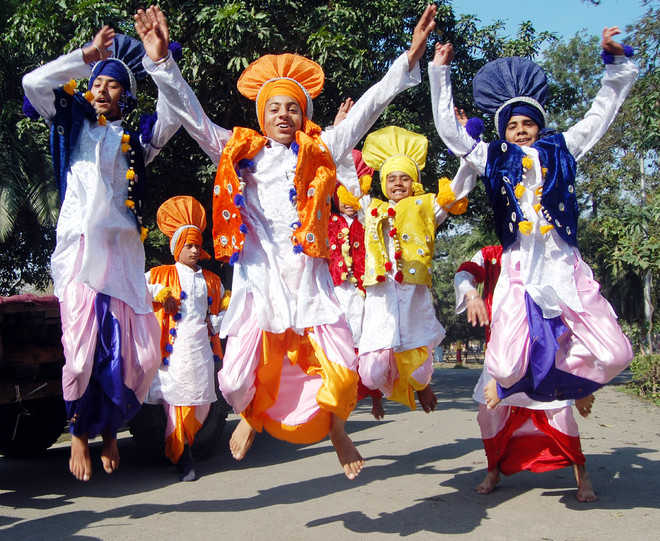Gurnaaz Kaur
Combine vigorous kicks, leaps and bends of the body with boliyan (traditional folk songs), then bring in coordination, timing and technique; accompany it with rhythm of dhol, algozeh, chimpta and tumbi — what you now have is the perfect recipe of bhangra, a folk dance characterised by its joy and enthusiasm.
The World Bhangra Day, which falls on April 13, which is also celebrated as Baisakhi, is not by any coincidence; it was on this day when Punjabi farmers welcomed spring through this dance form. This dance form has undergone a major makeover with time.
True love
“I have been performing, teaching and promoting Bhangra for over 40 years now. From participating in various cultural programmes across India to taking this dance to other countries my life has revolved around Bhangra,” shares Avtaar Channa, secretary general of World Bhangra Council.
When Avtaar realised the need for a common platform that connected Bhangra enthusiasts, World Bhangra Council was born. Today it sees the participation of 26 countries and over 150 representatives, who are called cultural ambassadors. He is of the opinion that these days Bhanga has become too fast-paced, but originally it was all about being happy and enjoying every step of it.
Historical angle
Hardeep Sahota, who lives in the UK, has written a thesis on Bhangra and is also the founder of World Bhangra Council. This year they are commemorating the day by performing in unison across the world at exact 2 pm (GMT). Being a teacher, he understands the growing change and tries to sync it with the traditional moves.
“It was my quest to understand my virsa (heritage) that compelled me to delve deep into this subject. There is history behind every move in Bhangra and each step also has a name. While I do teach all of this to my students, I also know that the younger generation likes its modernised version, which is more of freestyle.” By freestyle Hardeep means approximately 20 different moves in a minute—this does make it very high in energy but lacks the grace of the traditional folk dance, as the focus is only actions and hardly on words.
Dhol beat
Essential to the traditional form of Bhangra is dhol beat. The performer has to synchronise his chaal according to the beat, show expressions in accordance with the lyrics. The legacy which the likes of Kuldip Manak have left, Hardeep believes modern-day legends such as Malkit Singh, Sarabjeet Cheema, Daljit Dosanj and Sartaj are preserving.
Punjabi singer and Bhangra dancer Pammi Bai says this dance form is now merely restricted to the stages of schools, colleges and universities. “While it is being preserved, it is also being distorted. Before Partition, Bhangra was all about celebrating agriculture and now if not competitions it is in academies, gyms, parties and weddings.”
Western influence
From being a student to becoming a teacher of Bhangra at Vivek High School, Jatinder Singh also teaches jhumar, luddi, giddha, sammi and other Punjabi folk dances. He says, “Essentially, Bhangra was only for men as the movements were in tandem with their bodies and giddha was for women. But these days, even women do Bhangra, which is a western influence. A good thing is once restricted to melas, today everyone wants to learn it.”
Bhangra may have grown out of the traditional form, but for many it is still an art form worth curating, researching, documenting and promoting.
gurnaaz@tribunemail.com
Unlock Exclusive Insights with The Tribune Premium
Take your experience further with Premium access.
Thought-provoking Opinions, Expert Analysis, In-depth Insights and other Member Only Benefits
Already a Member? Sign In Now










